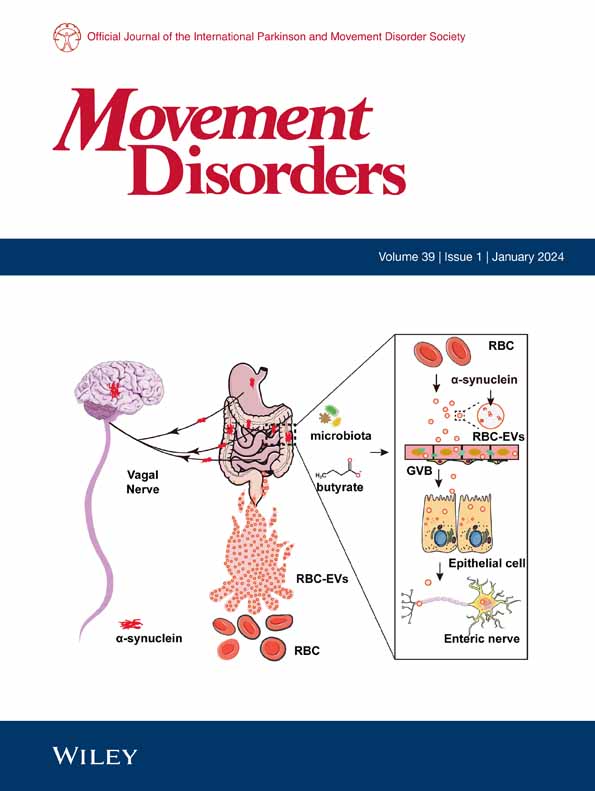Abnormal Brain Iron Metabolism is Linked to Altered Neural Function in Isolated Laryngeal Dystonia.
IF 7.4
1区 医学
Q1 CLINICAL NEUROLOGY
引用次数: 0
Abstract
BACKGROUND Laryngeal dystonia (LD) is an isolated focal dystonia causing involuntary spasms in the laryngeal muscles that selectively impair speech production. LD is characterized as a functional and structural neural network disorder; however, the mechanistic aspects of network dysfunction in dystonia remain unknown. OBJECTIVE We hypothesized that iron-induced abnormal metabolic processes may underlie microstructural neuronal damage, contributing to altered neural activity within the dystonic network and, subsequently, the development of the dystonic state. METHODS We used 7 Tesla magnetic resonance imaging (MRI) at ultra-high field resolution for quantitative susceptibility mapping (QSM) of iron content, multi-echo multi-band resting-state functional MRI (fMRI) of brain activity and functional connectivity, positron emission tomography with [11C]flumazenil radioligand of GABAA neuroreceptor availability, and immunohistochemistry of postmortem brain tissue to investigate iron metabolism in LD patients and healthy controls. RESULTS The QSM analysis found increased iron content in primary sensorimotor and premotor cortices, inferior frontal, middle frontal, and middle temporal gyri, middle cingulate cortex, superior and inferior parietal lobules, insula, putamen, and cerebellum. Histopathology substantiated the neuroimaging findings by showing focal clusters of iron precipitates in these regions. Increased iron content in the supplementary motor area and middle cingulate cortex was associated with altered neural activity, while increased iron in the middle cingulate cortex, premotor cortex, and putamen had associations with GABAA receptor availability in LD patients. CONCLUSION Abnormal iron accumulations are likely to contribute to the imbalance of excitatory and inhibitory signaling within the dystonic neural network, leading to altered network dynamics that ultimately contribute to LD development. © 2025 International Parkinson and Movement Disorder Society.脑铁代谢异常与孤立性喉张力障碍患者神经功能改变有关。
背景喉张力障碍(LD)是一种孤立的局灶性肌张力障碍,引起喉部肌肉的不自主痉挛,选择性地损害语言产生。LD具有功能性和结构性神经网络障碍的特征;然而,肌张力障碍中神经网络功能障碍的机制尚不清楚。目的:我们假设铁诱导的异常代谢过程可能是神经微结构损伤的基础,导致张力障碍网络内神经活动的改变,并随后导致张力障碍状态的发展。方法采用超高场分辨率7特斯拉磁共振成像(MRI)进行铁含量定量敏感性定位(QSM)、多回波多波段静息状态功能MRI (fMRI)检测脑活动和功能连性、GABAA神经受体可用性[11C]氟马西尼放射配体正电子发射断层扫描(正电子发射断层扫描)和死后脑组织免疫组化研究LD患者和健康对照组的铁代谢。结果QSM分析发现,初级感觉运动和运动前皮层、下额叶、中额叶和颞回中部、中扣带皮层、上、下顶叶小叶、脑岛、壳核和小脑的铁含量增加。组织病理学证实了神经影像学的发现,在这些区域显示局灶性铁沉淀簇。补充运动区和中扣带皮层铁含量的增加与神经活动的改变有关,而中扣带皮层、运动前皮层和壳核铁含量的增加与LD患者GABAA受体的可用性有关。结论异常的铁积累可能导致张力障碍神经网络中兴奋和抑制信号的不平衡,从而导致网络动力学的改变,最终导致LD的发生。©2025国际帕金森和运动障碍学会。
本文章由计算机程序翻译,如有差异,请以英文原文为准。
求助全文
约1分钟内获得全文
求助全文
来源期刊

Movement Disorders
医学-临床神经学
CiteScore
13.30
自引率
8.10%
发文量
371
审稿时长
12 months
期刊介绍:
Movement Disorders publishes a variety of content types including Reviews, Viewpoints, Full Length Articles, Historical Reports, Brief Reports, and Letters. The journal considers original manuscripts on topics related to the diagnosis, therapeutics, pharmacology, biochemistry, physiology, etiology, genetics, and epidemiology of movement disorders. Appropriate topics include Parkinsonism, Chorea, Tremors, Dystonia, Myoclonus, Tics, Tardive Dyskinesia, Spasticity, and Ataxia.
 求助内容:
求助内容: 应助结果提醒方式:
应助结果提醒方式:


